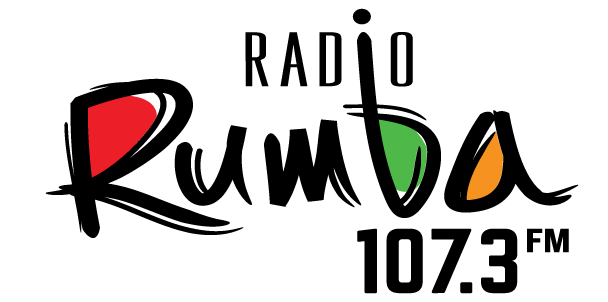High blood pressure, generally known as hypertension, is an extensive health and wellness problem that affects countless individuals worldwide. It is a persistent clinical condition defined by elevated blood pressure degrees, which can cause serious problems if left without treatment. The very early detection as well as accurate medical diagnosis of high blood pressure are critical in taking care of and preventing its potential issues. In this short article, we will certainly explore the analysis procedure of hypertension, checking out the various devices and also techniques used by medical care professionals.
First Evaluation: Blood Pressure Measurement
The very first step in identifying hypertension is via a routine high blood pressure dimension. Both in medical setups as well as in the house, blood pressure can be measured making use of a sphygmomanometer, a gadget that includes a blow up cuff and also a pressure scale. The blood pressure reading is revealed in millimeters of mercury (mmHg) cardiobalance test and is commonly videotaped as two numbers: systolic pressure over diastolic pressure, such as 120/80 mmHg. Systolic pressure stands for the force put in on the arterial wall surfaces when the heart contracts, while diastolic stress reflects the stress in the arteries when the heart is at remainder.
It is important to note that a single hypertension analysis does not necessarily verify the diagnosis of high blood pressure. Instead, health care professionals rely on duplicated measurements, handled various occasions, to develop a diagnosis. This is since blood pressure can fluctuate throughout the day as well as can be affected by various aspects such as anxiety, physical effort, as well as medication use.
According to the American Heart Organization (AHA), a medical diagnosis of hypertension is normally made when an individual’s high blood pressure regularly checks out 130/80 mmHg or greater throughout several brows through to the doctor.
Confirmatory Examinations: Ambulatory Blood Pressure Surveillance and Residence Blood Pressure Surveillance
In many cases, medical care experts might suggest added blood pressure tracking approaches to validate the medical diagnosis of hypertension. Two commonly utilized techniques are ambulatory high blood pressure surveillance (ABPM) as well as home high blood pressure monitoring (HBPM).
ABPM entails using a mobile blood pressure display that instantly gauges high blood pressure at routine periods throughout the day and night. This method offers an extra thorough understanding of an individual’s blood pressure patterns, helping to eliminate “white layer high blood pressure” (raised blood pressure in a professional setup as a result of stress and anxiety or stress and anxiety). ABPM can also discover “concealed high blood pressure” (regular high blood pressure in a clinical setting regardless of elevated blood pressure outside the center).
HBPM, on the various other hand, involves utilizing a high blood pressure monitor at home to gauge high blood pressure at various times of the day over several weeks. This technique allows people to check their high blood pressure in their very own atmosphere, providing important details regarding their ordinary high blood pressure degrees as well as any type of potential variations. HBPM can be especially valuable for individuals with believed white coat hypertension or those requiring close surveillance of their blood pressure due to existing clinical problems.
Both ABPM and HBPM can assist health care professionals make an even more accurate diagnosis of hypertension and tailor therapy intends as necessary.
Secondary High Blood Pressure: Identifying Underlying Creates
While many situations of high blood pressure are categorized as key or essential hypertension (without any recognizable reason), about 5% to 10% of individuals with hypertension have second high blood pressure, which is caused by an underlying clinical problem or drug.
In cases where additional high blood pressure is suspected, medical care professionals might recommend additional examinations to identify the underlying cause. These tests may include:
- Blood examinations to examine kidney function, hormonal agent levels, as well as blood sugar level
- Urine tests to check for abnormalities
- Cholesterol and lipid profile examinations to evaluate cardiovascular health
- Electrocardiogram (ECG) to determine the electrical task of the heart
- Echocardiogram to review the framework as well as feature of the heart
- Imaging tests such as ultrasound, computed tomography (CT), or magnetic resonance imaging (MRI) to analyze the kidneys, adrenal glands, or capillary
These examinations aid medical care experts determine possible underlying sources of secondary high blood pressure, such as kidney condition, hormonal conditions, or certain medicines. By attending to the underlying reason, healthcare providers can establish targeted therapy strategies to manage both the hypertension and also the associated problem.
Tracking and Follow-up
As soon as a medical diagnosis of hypertension is verified, healthcare experts establish customized therapy plans to take optiheart contraindicaciones care of high blood pressure degrees as well as decrease the risk of issues. Therapy may consist of lifestyle alterations, such as nutritional modifications, regular exercise, weight administration, and also anxiety reduction strategies. Drugs may additionally be suggested when required. Routine monitoring and follow-up visits are important to examine the performance of therapy and make any kind of needed adjustments.
Verdict
Detecting high blood pressure includes a methodical procedure that starts with high blood pressure dimensions and also may include added analysis methods like ABPM and also HBPM. Determining the underlying source of additional hypertension is vital in taking care of the problem successfully. Routine surveillance and also follow-up sees allow healthcare professionals to assess therapy plans and also make certain that blood pressure is well-controlled. By diagnosing and handling high blood pressure without delay, people can minimize the threat of connected problems and also lead much healthier lives.





